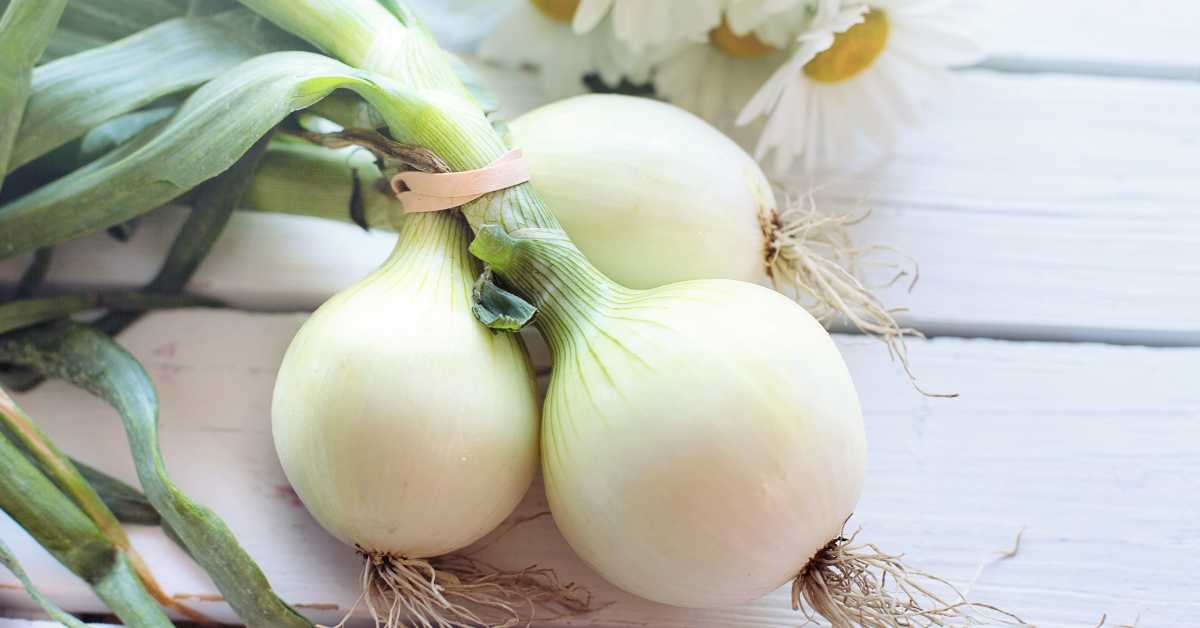Giving infants a vitamin K1 injection at birth is standard practice in the United States and many other countries. This article covers why infants get vitamin K1 at birth and explains why we give infants vitamin K1 but not vitamin K2.
What Is Vitamin K?
Vitamin K is a group of compounds that act as cofactors for vitamin K dependent enzymes. These enzymes play a key role in blood clotting, calcium management, bone health, and more (1).
The most important and well-studied types of vitamin K are vitamin K1 (phylloquinone) and vitamin K2 (menaquinone). Vitamin K1 is important for healthy blood clotting. Vitamin K2 is important for healthy bone growth and calcium metabolism; it plays a much smaller role in blood clotting (1).
Newborn Vitamin K Levels Are Naturally Low
Newborn infants naturally have vitamin K levels that are 40-60% of normal adult values. Without supplementation, vitamin K levels gradually rise until they meet the normal adult values at approximately 6 months of age (2).
The reasons that newborns have lower levels of vitamin K include:
- Poor placental transfer of vitamin K (3)
- Breast milk is low in vitamin K (3)
- Newborn gut flora is immature and may contribute to vitamin K malabsorption (3)
Vitamin K Deficiency Bleeding In Infants
Because infants have naturally lower levels of vitamin K, they are at increased risk for Vitamin K Deficiency Bleeding. Vitamin K Deficiency Bleeding (VKDB) is a rare but life-threatening condition in which infants bleed uncontrollably because they don’t have enough vitamin K in order for their blood to clot properly (3).
Subtypes Of Vitamin K Deficiency Bleeding
There are three subtypes of Vitamin K Deficiency Bleeding that are categorized based on when they occur.
 1. Early Vitamin K Deficiency Bleeding
1. Early Vitamin K Deficiency Bleeding
Early VKDB occurs within the first 24 hours after birth. It occurs most often in infants whose mothers have low vitamin K due to either a medication that interferes with vitamin K or a malabsorption condition (3).
The incidence of early VKDB among at-risk infants* who don’t receive vitamin K at birth is 6-12%. This type of VKDB is very serious because the bleeding most often occurs in the brain. Mortality is up to 50% and long term neurological problems are common (3).
*At-risk infants have mothers who are taking medications that contribute to low vitamin K levels or have malabsorption conditions resulting in low maternal vitamin K levels (3).
Medications that contribute to low vitamin K levels include: anticonvulsants (carbamazepine, phenytoin, barbiturates), antituberculosis drugs (isoniazid, rifampicin), certain antibiotics (cephalosporins), and vitamin K antagonists (warfarin) (3).
Maternal conditions that could potentially contribute to low vitamin K levels include: liver disease, gallbladder disease, cystic fibrosis, celiac disease, inflammatory bowel disease (eg. Crohn’s Disease, Colitis), irritable bowel syndrome, short bowel syndrome, and bariatric surgery (3, 4, 5, 6, 7).
2. Classic Vitamin K Deficiency Bleeding
Classic VKDB occurs within the first week after birth. It is associated with low vitamin K levels in breast milk and infants who are having difficulty with feeding.
The incidence of classic VKDB is 0.25%-1.7% of infants who don’t have any underlying conditions. This type of VKDB most commonly causes gastrointestinal bleeding, umbilical bleeding, or bleeding from nose/skin/wounds/injections. Fortunately, it responds well to treatment. Bleeding in the brain is rare.
3. Late Vitamin K Deficiency Bleeding
Late VKDB occurs within the first 6 months of life. It can be associated with underlying conditions of the infant that interfere with vitamin K absorption or it can occur without any apparent cause (3).
Late VKDB is rare; the incidence is 1 in 14,000 to 1 in 25,000 infants. This type of VKDB is quite serious as bleeding often occurs in the brain (3).
Warning Signs Of Vitamin K Deficiency Bleeding
Very often with VKDB there are no warning signs until a life-threatening bleed starts to happen, especially with early and late VKDB (8). However, sometimes there are warning signs of VKDB (listed below) that require immediate medical attention (8). Since neither the vitamin K1 injection (9) nor the oral protocol (10) is 100% effective, if there are underlying issues affecting vitamin K, it is always wise to be aware of warning signs even if the infant has received preventative vitamin K1 (38).
Warning Signs Of VKDB In Infants
- Visible signs of bleeding, including from the nose, injection sites, or umbilical cord, or unusual bruising, especially around the head and face.
- Skin or gums (for darker skinned babies) may become pale, indicating potential blood loss.
- Jaundice (yellow skin and/or eyes) after 3 weeks of age. Mild newborn jaundice commonly occurs 2-3 days after birth, lasts for 2-3 weeks, and isn’t associated with VKDB.
- Poop that is bloody, black, or dark, and sticky, and/or vomiting of blood indicate bleeding in the digestive tract.
- Signs of bleeding in the brain, including changes in behavior, irritability, seizures, excessive sleepiness, bulging fontanelles, enlarged pupil(s) not responding to light, and vomiting.
Risk Factors For Vitamin K Deficiency Bleeding
Certain conditions contribute to increased risk of vitamin K deficiency bleeding:
- Exclusive breastfeeding. Infant formula contains significantly more vitamin K than breast milk (3).
- Liver, gallbladder, and gastrointestinal malabsorption diseases. Vitamin K is a fat-soluble vitamin. If an infant has difficulty absorbing it, their levels may be low (3).
- Mothers using certain medications that interfere with vitamin K levels as listed above (3).
- Some genetic polymorphisms are associated with an increased risk of vitamin K deficiency including variations of VKORC1 (vitamin K epoxide reductase complex 1) and CYP2C9 (cytochrome P450 2C9) (3).
- Long term antibiotics in infants (>10 days) may increase the risk of VKDB (11).
- Late VKDB appears to be higher in Asian populations, but it is unclear if this is related to genetics, lifestyle, or both (3).
History Of Giving Vitamin K At Birth To Prevent Vitamin K Deficiency Bleeding
Vitamin K was first discovered in 1929 by Danish biochemist Henrik Dam who was investigating the cause of hemorrhages in baby chicks fed a fat-free diet. He isolated the fat-soluble vitamin needed to make blood clot properly and named it vitamin K for “koagulation,” which is the German and Scandinavian spelling of coagulation. Vitamin K is responsible for activating several coagulation factors (VII, IX, X) and prothrombin (12).
 After this discovery, doctors began treating hemorrhagic disease of the newborn (now called Vitamin K Deficiency Bleeding) with oral vitamin K (12).
After this discovery, doctors began treating hemorrhagic disease of the newborn (now called Vitamin K Deficiency Bleeding) with oral vitamin K (12).
In the 1940s, doctors began giving oral or injected vitamin K to newborn infants to prevent hemorrhagic disease. This practice is often called vitamin K prophylaxis. They experimented with different doses of vitamin K and found that a 0.5 – 1.0 mg IM injection was the most effective at preventing VKDB. This is the dose that was adopted by the American Academy of Pediatrics in 1961, which is still used today (12).
Vitamin K was initially thought to be harmless, and therefore doctors increased the dose given to infants if 1 mg failed to stop a hemorrhage. They found out that high doses of vitamin K (>5 mg/day) were toxic and could cause destruction of red blood cells (aka. hemolysis). When red blood cells are destroyed it causes bilirubin to build up in the body, which can result in jaundice and even brain damage (12).
Though injected doses of 1.0 mg of vitamin K are standard and don’t cause symptoms of vitamin K toxicity, research is still underway to determine the optimal protocol (13, 39). The ideal dose for preterm infants is also being actively investigated and more research is needed (14, 39).
Why We Give Infants Vitamin K1 Instead Of Vitamin K2
Vitamin K1 is the form of vitamin K that helps with blood clotting and prevents Vitamin K Deficiency Bleeding (VKDB). Vitamin K2, while important for good health, does NOT prevent Vitamin K Deficiency Bleeding (37).
Most of the vitamin K supplements on the market are of the vitamin K2 form and are therefore not appropriate for oral vitamin K prophylaxis in newborns. If you’re choosing to give your infant oral vitamin K1 instead of, or in addition to, an injection, be sure that your vitamin K1 supplement and dosing protocol are approved by your healthcare provider.
Can Breastfeeding Mothers Supplement With Vitamin K1 Instead Of Giving It To Infants?
Giving breastfeeding mothers 5 mg of oral vitamin K1 can increase the vitamin K1 content of breastmilk enough to increase the vitamin K levels of her baby (40, 41). Many prenatal and postnatal multivitamins contain vitamin K1 but not at levels expected to affect breast milk concentrations; therefore, an additional vitamin K1 supplement would be needed.
There haven’t been any studies looking at the efficacy of supplementing breastfeeding mothers with vitamin K1 as a strategy for preventing VKDB, so I can’t comment on or recommend this strategy.
Do Formula-Fed Infants Need Vitamin K1 Prophylaxis?
Most, but not all cases of VKDB, occur in exclusively breastfed infants, which is likely because infant formula contains added vitamin K1. While this additional vitamin K can be factored in as part of an oral protocol, simply skipping vitamin K1 prophylaxis altogether for formula-fed infants is not advised because VKDB is still possible in formula-fed infants, especially in the case of underlying issues with absorption (42).
Should Low Vitamin K In Infants Be Corrected?
Some sources question whether we should give vitamin K to newborns at all. The idea is that if all newborns are low in vitamin K, this must be by design rather than by accident and therefore isn’t something that needs to be corrected.
One theory is that stem cells from cord blood travel through the newborn’s body to repair any trauma that happens during birth, but giving vitamin K at birth results in “thicker” blood, which interferes with stem cell function by impairing their ability to move freely throughout the body. Another theory is that low levels of vitamin K protect against cancer. These are interesting questions, that go beyond the scope of this article, and I plan to explore them in an upcoming article. However, at present, I couldn’t find any scientific evidence to show that infants who don’t receive vitamin K at birth are protected against cancer or have any other health advantages over infants who receive vitamin K.
When considering if low vitamin K levels in infants have evolutionary benefit, we should also consider whether or not infant vitamin K levels are actually optimal. During the past century, our lifestyles have changed considerably and things that affect the newborn’s vitamin K levels have changed dramatically as well. Namely, we eat less vitamin K containing foods (eg. leafy greens and other vegetables) and have less healthy and diverse microbiomes (eg. from the food we eat, indoor lifestyles, and antibiotic treatment). It is possible that infants in 2023 are born with sub-optimal blood levels of vitamin K compared to our original evolution/design.
Summary
Vitamin K is given to newborns to prevent Vitamin K Deficiency Bleeding (VKDB). VKDB is a rare but life-threatening condition that can occur up to six months after birth.
References:
- Vitamin K – Health Professional Fact Sheet
- Stachowiak, A., & Furman, L. (2020). Vitamin K Is Necessary for Newborns. Pediatrics in review, 41(6), 305–306. https://doi.org/10.1542/pir.2019-0146
- Araki, S., & Shirahata, A. (2020). Vitamin K Deficiency Bleeding in Infancy. Nutrients, 12(3), 780. https://doi.org/10.3390/nu12030780
- Chen, C. S., Cumbler, E. U., & Triebling, A. T. (2007). Coagulopathy due to celiac disease presenting as intramuscular hemorrhage. Journal of general internal medicine, 22(11), 1608–1612. https://doi.org/10.1007/s11606-007-0297-y
- Kuwabara, A., Tanaka, K., Tsugawa, N., Nakase, H., Tsuji, H., Shide, K., Kamao, M., Chiba, T., Inagaki, N., Okano, T., & Kido, S. (2009). High prevalence of vitamin K and D deficiency and decreased BMD in inflammatory bowel disease. Osteoporosis international : a journal established as result of cooperation between the European Foundation for Osteoporosis and the National Osteoporosis Foundation of the USA, 20(6), 935–942. https://doi.org/10.1007/s00198-008-0764-2
- Grabosch, S., Pennycook, J., Pakravan, A., & Mostello, D. (2013). Short bowel syndrome causing bleeding diathesis and profound vitamin deficiency in pregnancy. Obstetrics and gynecology, 121(2 Pt 2 Suppl 1), 434–436. https://doi.org/10.1097/aog.0b013e31827e5ab3
- Sherf-Dagan, S., Goldenshluger, A., Azran, C., Sakran, N., Sinai, T., & Ben-Porat, T. (2019). Vitamin K-what is known regarding bariatric surgery patients: a systematic review. Surgery for obesity and related diseases : official journal of the American Society for Bariatric Surgery, 15(8), 1402–1413. https://doi.org/10.1016/j.soard.2019.05.031
- Learn About Vitamin K and Vitamin K Deficiency Bleeding | CDC
- Ciantelli, M., Bartalena, L., Bernardini, M., Biver, P., Chesi, F., Boldrini, A., & Sigali, E. (2009). Late vitamin K deficiency bleeding after intramuscular prophylaxis at birth: a case report. Journal of perinatology : official journal of the California Perinatal Association, 29(2), 168–169. https://doi.org/10.1038/jp.2008.131
- van Hasselt, P. M., Houwen, R. H., van Dijk, A. T., & de Koning, T. J. (2003). De zuigeling met een vitamine-K-deficiëntiebloeding ondanks adequate profylaxe [Vitamin K deficiency bleeding in an infant despite adequate prophylaxis]. Nederlands tijdschrift voor geneeskunde, 147(16), 737–740.
- Elalfy MS, Ebeid FSE, Elagouza IA, Ibrahim FA, Hassan NBM, Botros BA. Negative Impact of Prolonged Antibiotics or Persistent Diarrhea on Vitamin K1 Levels in 2-24 Weeks aged Egyptian Infants. Mediterr J Hematol Infect Dis. 2018 Jan 1;10(1):e2018010. doi: 10.4084/MJHID.2018.010. PMID: 29326806; PMCID: PMC5760067.
- Majid, A., Blackwell, M., Broadbent, R. S., Barker, D. P., Al-Sallami, H. S., Edmonds, L., Kerruish, N., & Wheeler, B. J. (2019). Newborn Vitamin K Prophylaxis: A Historical Perspective to Understand Modern Barriers to Uptake. Hospital pediatrics, 9(1), 55–60. https://doi.org/10.1542/hpeds.2018-0104
- Marchili, M.R., Santoro, E., Marchesi, A. et al. Vitamin K deficiency: a case report and review of current guidelines. Ital J Pediatr 44, 36 (2018). https://doi.org/10.1186/s13052-018-0474-0
- Ardell, S., Offringa, M., Ovelman, C., & Soll, R. (2018). Prophylactic vitamin K for the prevention of vitamin K deficiency bleeding in preterm neonates. The Cochrane database of systematic reviews, 2(2), CD008342. https://doi.org/10.1002/14651858.CD008342.pub2
- Jullien S. (2021). Vitamin K prophylaxis in newborns. BMC pediatrics, 21(Suppl 1), 350. https://doi.org/10.1186/s12887-021-02701-4
- Fiesack, S., Smits, A., Rayyan, M., Allegaert, K., Alliet, P., Arts, W., Bael, A., Cornette, L., De Guchtenaere, A., De Mulder, N., George, I., Henrion, E., Keiren, K., Kreins, N., Raes, M., Philippet, P., Van Overmeire, B., Van Winckel, M., Vlieghe, V., Vandenplas, Y., … On Behalf Of The Groups (2021). Belgian Consensus Recommendations to Prevent Vitamin K Deficiency Bleeding in the Term and Preterm Infant. Nutrients, 13(11), 4109. https://doi.org/10.3390/nu13114109
- McMillan DD, Grenier D, Medaglia A. Canadian Paediatric Surveillance Program confirms low incidence of hemorrhagic disease of the newborn in Canada. Paediatr Child Health. 2004 Apr;9(4):235-8. doi: 10.1093/pch/9.4.235. PMID: 19655015; PMCID: PMC2720503.
- Ng, E., & Loewy, A. D. (2018). Position Statement: Guidelines for vitamin K prophylaxis in newborns: A joint statement of the Canadian Paediatric Society and the College of Family Physicians of Canada. Canadian family physician Medecin de famille canadien, 64(10), 736–739.
- Hansen, K. N., Minousis, M., & Ebbesen, F. (2003). Weekly oral vitamin K prophylaxis in Denmark. Acta paediatrica (Oslo, Norway : 1992), 92(7), 802–805.
- Cheng, J. H., Loyal, J., Wood, K. E., & Kair, L. R. (2020). Oral Vitamin K Prophylaxis in Newborns: A Survey of Clinician Opinions and Practices. Hospital pediatrics, 10(2), 153–158. https://doi.org/10.1542/hpeds.2019-0219
- McNinch, A. W., Upton, C., Samuels, M., Shearer, M. J., McCarthy, P., Tripp, J. H., & L’E Orme, R. (1985). Plasma concentrations after oral or intramuscular vitamin K1 in neonates. Archives of disease in childhood, 60(9), 814–818. https://doi.org/10.1136/adc.60.9.814
- Goldschmidt, B., Kisrákói, C., Téglás, E., Verbényi, M., & Kovács, I. (1990). K1-vitamin koncentráció és a K-vitamin dependens alvadási faktorok újszülöttekben K1-vitamin intramuscularis és oralis adása után [Vitamin K 1 concentration and vitamin K-dependent clotting factors in newborn infants after intramuscular and oral administration of vitamin K 1]. Orvosi hetilap, 131(24), 1297–1300.
- Britt RB, Brown JN. Characterizing the Severe Reactions of Parenteral Vitamin K1. Clin Appl Thromb Hemost. 2018 Jan;24(1):5-12. doi: 10.1177/1076029616674825. Epub 2016 Oct 21. PMID: 28301903; PMCID: PMC6714635.
- Delong C, Preuss CV. Black Box Warning. [Updated 2023 Feb 11]. In: StatPearls [Internet]. Treasure Island (FL): StatPearls Publishing; 2023 Jan-. Available from: https://www.ncbi.nlm.nih.gov/books/NBK538521/
- Perry, M., Tan, Z., Chen, J., Weidig, T., Xu, W., & Cong, X. S. (2018). Neonatal Pain: Perceptions and Current Practice. Critical care nursing clinics of North America, 30(4), 549–561. https://doi.org/10.1016/j.cnc.2018.07.013
- Lan, H. Y., Yang, L., Lin, C. H., Hsieh, K. H., Chang, Y. C., & Yin, T. (2021). Breastmilk as a Multisensory Intervention for Relieving Pain during Newborn Screening Procedures: A Randomized Control Trial. International journal of environmental research and public health, 18(24), 13023. https://doi.org/10.3390/ijerph182413023
- Stevens, B., Yamada, J., Ohlsson, A., Haliburton, S., & Shorkey, A. (2016). Sucrose for analgesia in newborn infants undergoing painful procedures. The Cochrane database of systematic reviews, 7(7), CD001069. https://doi.org/10.1002/14651858.CD001069.pub5
- Johnston, C., Campbell-Yeo, M., Disher, T., Benoit, B., Fernandes, A., Streiner, D., Inglis, D., & Zee, R. (2017). Skin-to-skin care for procedural pain in neonates. The Cochrane database of systematic reviews, 2(2), CD008435. https://doi.org/10.1002/14651858.CD008435.pub3
- LeBel, M., Ferron, L., Masson, M., Pichette, J., & Carrier, C. (1988). Benzyl alcohol metabolism and elimination in neonates. Developmental pharmacology and therapeutics, 11(6), 347–356. https://doi.org/10.1159/000457714
- N.H. Choulis, Chapter 49 – Miscellaneous drugs, materials, medical devices, and techniques, Editor(s): J.K. Aronson, Side Effects of Drugs Annual, Elsevier, Volume 33, 2011, Pages 1009-1029. https://doi.org/10.1016/B978-0-444-53741-6.00049-0.
- Golding, J., Paterson, M. & Kinlen, L. Factors associated with childhood cancer in a national cohort study. Br J Cancer 62, 304–308 (1990). https://doi.org/10.1038/bjc.1990.283
- Golding J, Greenwood R, Birmingham K, Mott M. Childhood cancer, intramuscular vitamin K, and pethidine given during labour. BMJ. 1992;305(6849):341–346
- Fear NT, Roman E, Ansell P, Simpson J, Day N, Eden OB; United Kingdom Childhood Cancer Study. Vitamin K and childhood cancer: a report from the United Kingdom Childhood Cancer Study. Br J Cancer. 2003 Oct 6;89(7):1228-31. doi: 10.1038/sj.bjc.6601278. PMID: 14520451; PMCID: PMC2394315.
- Roman E, Fear NT, Ansell P, et al. Vitamin K and childhood cancer: analysis of individual patient data from six case-control studies. Br J Cancer. 2002;86(1):63–69
- Fear NT, Roman E, Ansell P, Simpson J, Day N, Eden OB; United Kingdom Childhood Cancer Study. Vitamin K and childhood cancer: a report from the United Kingdom Childhood Cancer Study. Br J Cancer. 2003;89(7):1228–1231
- Loyal, J., & Shapiro, E. D. (2020). Refusal of Intramuscular Vitamin K by Parents of Newborns: A Review. Hospital pediatrics, 10(3), 286–294. https://doi.org/10.1542/hpeds.2019-0228
- Mihatsch, W. A., Braegger, C., Bronsky, J., Campoy, C., Domellöf, M., Fewtrell, M., Mis, N. F., Hojsak, I., Hulst, J., Indrio, F., Lapillonne, A., Mlgaard, C., Embleton, N., van Goudoever, J., & ESPGHAN Committee on Nutrition (2016). Prevention of Vitamin K Deficiency Bleeding in Newborn Infants: A Position Paper by the ESPGHAN Committee on Nutrition. Journal of pediatric gastroenterology and nutrition, 63(1), 123–129. https://doi.org/10.1097/MPG.0000000000001232
- Hand, I., Noble, L., & Abrams, S. A. (2022). Vitamin K and the Newborn Infant. Pediatrics, 149(3), e2021056036. https://doi.org/10.1542/peds.2021-056036
- Lembo, C., Buonocore, G., & Perrone, S. (2021). The challenge to define the optimal prophylactic regimen for vitamin K deficiency bleeding in infants. Acta paediatrica (Oslo, Norway : 1992), 110(4), 1113–1118. https://doi.org/10.1111/apa.15566
- Vitamin K. (2022). In Drugs and Lactation Database (LactMed®). National Institute of Child Health and Human Development.
- Liu, J., Wang, Q., Gao, F., He, J. W., & Zhao, J. H. (2006). Maternal antenatal administration of vitamin K1 results in increasing the activities of vitamin K-dependent coagulation factors in umbilical blood and in decreasing the incidence rate of periventricular-intraventricular hemorrhage in premature infants. Journal of perinatal medicine, 34(2), 173–176. https://doi.org/10.1515/JPM.2006.031
- van Hasselt, P. M., de Vries, W., de Vries, E., Kok, K., Cranenburg, E. C., de Koning, T. J., Schurgers, L. J., Verkade, H. J., & Houwen, R. H. (2010). Hydrolysed formula is a risk factor for vitamin K deficiency in infants with unrecognised cholestasis. Journal of pediatric gastroenterology and nutrition, 51(6), 773–776. https://doi.org/10.1097/MPG.0b013e3181efb0b3








